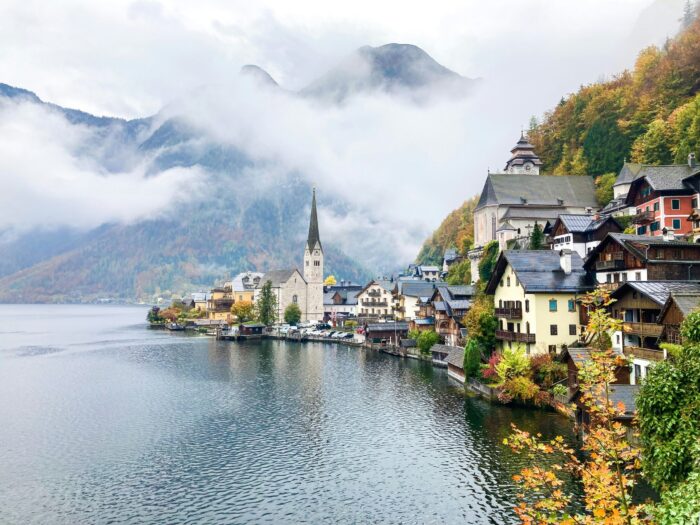Too much of a good thing?
Record-breaking travel in 2024 is fuelling tensions due to overcrowding and environmental strain across popular destinations.
Getting to a friend’s wedding in York last weekend brought a stark (personal) perspective on the issues of pressures from mass tourism. A short walk through the Snickelways of this ancient town to the church was near impossible for the throngs of day trippers armed with backpacks, baseball caps, selfie sticks and inane pointing. No one wants to be that local who curses the fortunes of their city’s attractions, but then, no one wants to burst into church late for a mate’s wedding either.
Bitten by success
My inconvenience, though annoying, pales against those in locations where visitors render a city almost unlivable. The streets of Palma erupted into chaos recently as thousands marched against what they see as an overwhelming wave of tourism. Their complaint? That tourism is punishing residents and suffocating the island’s unique culture. This tension, which has been simmering for years, isn’t just a problem for Majorca; it’s symptomatic of a wider issue sweeping across Europe’s most beloved urban destinations.
Post-pandemic demand and economic shifts
Many headlines attest that 2024 tourism numbers are well past pre-pandemic levels, with more people jumping on planes, grabbing deals and booking online whenever an opportunity presents. While growth in an industry is generally positive, for others in hotspots like Spain’s Balearic Islands, and perennial problem children like Venice, Barcelona, Paris or new kid on the block Hallstatt, it’s a nightmare come true. The boom of tourism creates rent hikes, strains resources and disrupts daily life, leaving nagging thoughts of whether tourism is more curse than blessing.
Economic displacement – locals priced out
The Balearic Islands is the classic case at point where the pressure of tourists has coincided with skyrocketing rents, pricing locals out of their own neighbourhoods. Stories like that of a chef in Ibiza forced to live in his car for three years due to unaffordable housing paint a stark picture of the reality behind the promises of sun, sand and fun that draw tourists to the islands. Those who would consider themselves as middle class struggle to find affordable accommodation, which creates a threat to the fabric of community life.
This story repeats itself across Europe. In Venice, a UNESCO World Heritage site, the relentless tide of visitors has contributed to the depopulation of the city. Fewer than 50,000 residents remain, a dramatic drop from the 150,000 who lived there in the 1970s. Despite restrictions on cruise ships that bring thousands of day-trippers into the city centre and others arriving by train or coach, the balance has yet to be restored. Venetian locals complain of more tourist beds than homes, and of their city becoming a historical theme park – a parody version of itself.

The sense of being overwhelmed by tourism isn’t confined to traditional hotspots. The Austrian village of Hallstatt, often touted as the inspiration for Disney’s ‘Frozen,’ has become a victim of its own fame. A village of 800 residents is inundated by as many as 10,000 visitors a day, many of whom treat the town as a backdrop for their Instagram feeds. This influx has sparked protests, with residents blocking roads in frustration at the daily disruption to their lives. It’s another case of citizens wanting some peace and preservation of local life that clashes with tourism.
Searching for solutions: the future of sustainable tourism
As the backlash against overtourism grows, some cities and regions are experimenting with solutions to mitigate the damage. Venice levies a tourist tax on accommodation and introduced a trial €5 fee for day-trippers, hoping to manage the flow of visitors and reduce the strain on local resources. Other destinations are raising entry fees or limiting the number of visitors to popular sites, shifting towards a high value, low volume tourism model. The aim is to attract tourists who spend more and are more mindful of their impact, rather than simply seeking to maximise visitor numbers.
Another approach is to encourage off-peak travel. By promoting the shoulder season, destinations can avoid the intense overcrowding that comes with peak season travel – though this model is often challenged as exacerbating problems to year-round turmoil. The sheer volume of tourists, driven by cheap flights and the rise of new markets like China and India, makes it difficult to imagine a significant reduction in the number of visitors without more drastic interventions.
One of the most talked-about strategies is dispersal – encouraging tourists to visit less popular, but equally beautiful, locations. By redirecting some of the flow away from overcrowded cities to lesser-known destinations, the pressure on popular sites can be alleviated. However, this requires careful planning and investment in infrastructure, as well as a commitment to preserving the character of these alternative destinations.
The ethical challenge: who has the right to travel?
Despite these efforts, there are no easy answers to the challenges of overtourism. The problem is global, fuelled by social media and the growing affluence of new tourist markets. India, with its booming middle class, is set to become a major player in international tourism, with predictions of 70 million Indian tourists traveling abroad by 2030. While this growth presents opportunities for destinations eager to attract new visitors, it also raises tough questions about sustainability and the long-term impact on local communities.
As tourism continues to expand, the ethical conundrum grows. Who has the right to travel, and at what cost? Those in the West have long enjoyed the freedom to explore, often without considering the consequences for the people who live there. Now, as new markets enter the fray, it seems hypocritical to critisise others for wanting the same opportunities.
Yet the undeniable strain on popular destinations forces us to confront the uncomfortable truth: that mass tourism, as it currently exists, will need to drastically change if it is to achieve any measure of sustainability.
Exploring the road less travelled: Southeast Asia’s uncharted wonders









